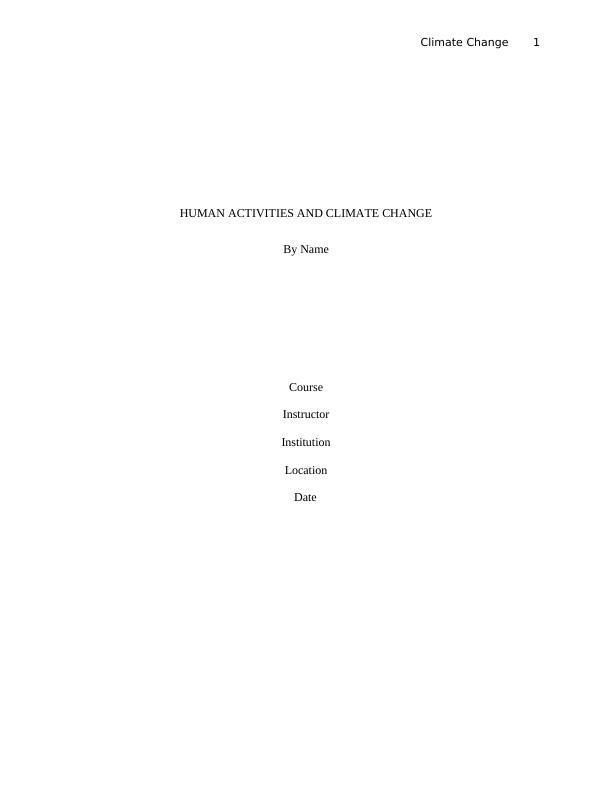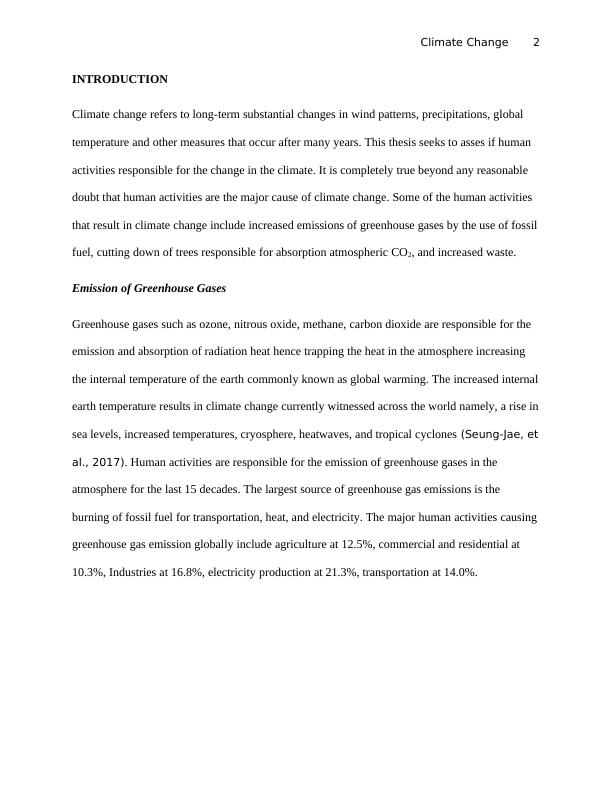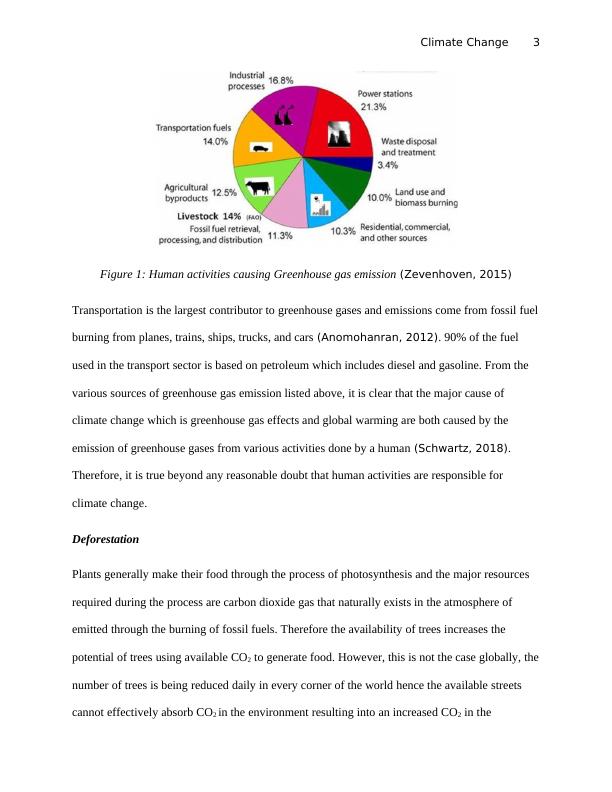Human Activities and Climate Change Thesis 2022
Write an argument essay discussing whether human activities are causing climate change, and create an essay plan outlining the structure of the essay.
7 Pages1282 Words28 Views
Added on 2022-09-23
Human Activities and Climate Change Thesis 2022
Write an argument essay discussing whether human activities are causing climate change, and create an essay plan outlining the structure of the essay.
Added on 2022-09-23
ShareRelated Documents
End of preview
Want to access all the pages? Upload your documents or become a member.
To What Extent is Climate Change a Result of Human Activities?
|7
|2026
|171
Causes and Effects of Global Warming
|5
|1650
|53
To what extent is Climate Change a result of human activities
|6
|1437
|403
Study On Water Scarcity & Large Power-cut Issue In UK
|9
|2354
|70
In what extent is climate change a result of human activities
|5
|1446
|378
Is Climate Change a Result of Human Activities?
|7
|1558
|65



